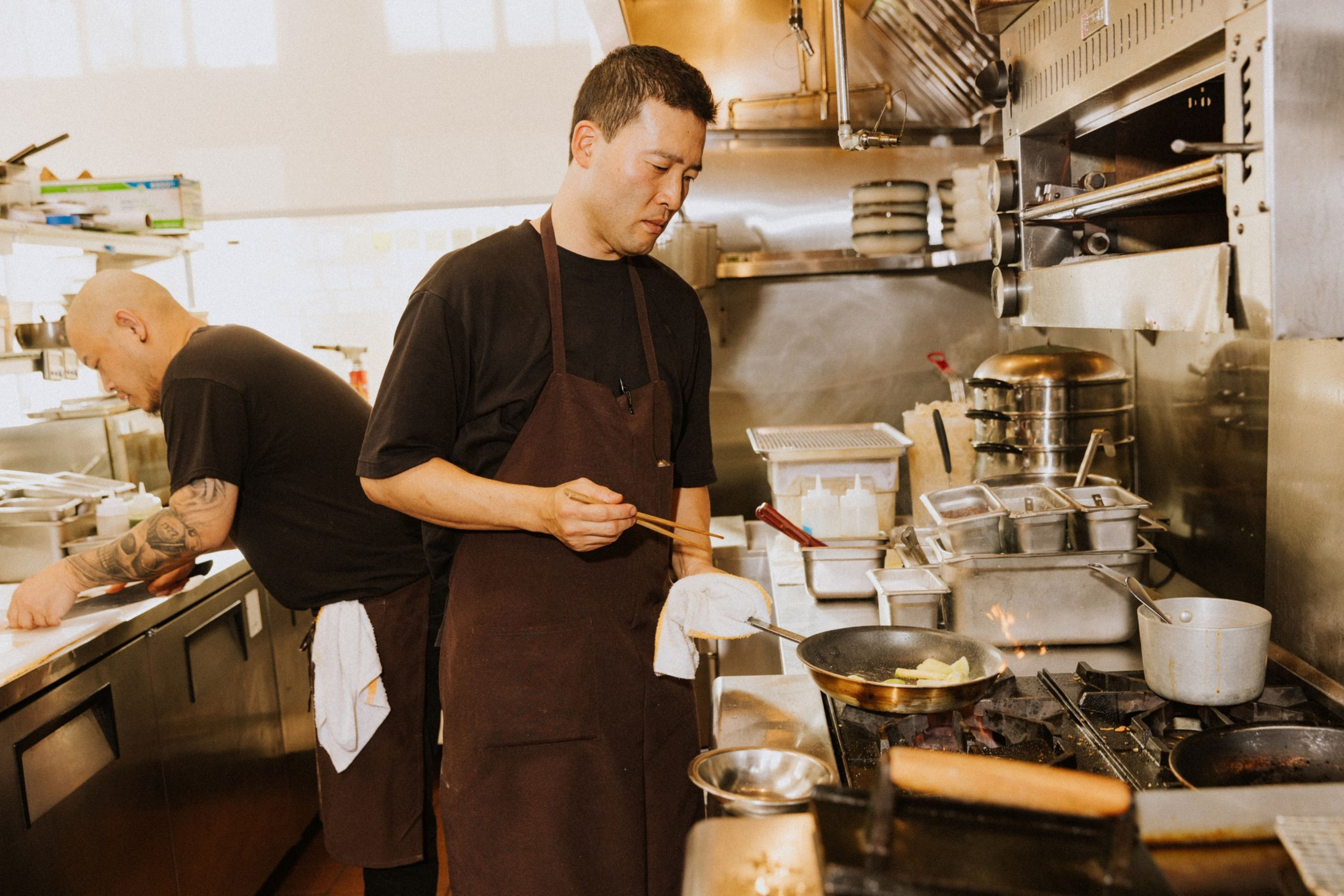This column is just a part of the Off Menu newsletter, where, every Wednesday, you’ll get restaurant news, gossip, tips, and hot takes. To sign up, visit The Standard’s newsletter page and select Off Menu. It’s free to subscribe!
These days, “nobody wants this” doesn’t refer only to a Netflix rom-com about a hot rabbi. The sentiment also applies to $50 plates of chicken fricassée and $75 bowls of cioppino. But diners aren’t the only ones flinching over restaurant prices. Here’s the plot twist: Chefs are looking at their own menus and wondering, “Who the hell approved this?”
As someone who regularly has to give the go-ahead on menus, Melissa Perello, owner of Octavia and Frances, often finds herself in disbelief. “I’m like, ‘We can’t charge this much for a salad.’ But then, I take a deep breath and accept it’s what we have to fucking charge,” she says with frustration.
Chef Craig Stoll of Delfina has been predicting for years that rising costs will make dining out an elite activity, something reserved for early shareholders of Nvidia. But even if he’s been anticipating $36 bowls of risotto, he feels sticker shock when he sees it on his own menu: “I think about people coming into our restaurant and what they spend. It’s embarrassing. But we need to stay in business. What are you going to do?”

It’s understandable that diners might think restaurant owners are taking them for a ride, but my experience is that most in the industry feel exactly like these two chefs — caught somewhere between deep mortification and glum resignation. Good restaurant operators want to keep prices reasonable. A good value is good business. Happy guests return.
As to why a Sweet Water pork loin with pommes purée and fennel-apple sauerkraut costs $50 at Octavia, Perello explains that it’s not just the food costs or the labor. She spends $900 a night on staff benefits like group insurance, workers’ comp, paid time off, and sick pay. Add up all the expenses, and — barring Saturdays, when the house is full and diners are feeling flush — Frances is barely breaking even.
If anything, fearful of scaring away diners, chefs have been subsidizing menu prices by absorbing the increasing costs of labor, food, and administration. Sung Park, the chef-owner of Kothai Republic in the Inner Sunset, does all he can to keep prices stable. “Right now, we can’t hire another person, so I’m also the server and line cook,” he says. “We should be charging more, but I want to do my best to make sure that people don’t feel like they’re overspending.”

Over at Rich Table in Hayes Valley, chef-owner Evan Rich serves a 14-ounce, dry-aged, grass-fed California rib-eye for $49. “In my mind, it’s like, ‘Oh my god, this is so expensive,’” he says. “But realistically, we should be charging between $58 and $65.” To make up for this loss leader, Rich keeps lower-cost dishes like his signature porcini doughnuts on the menu, hoping they will sell like hot cakes — and, fortunately for him, they do. “It’s our job to create value by building a balanced menu that makes sense and works — both for the guest and for a workable business.”
It’s worth noting that raising prices isn’t a panacea for a struggling restaurant. “You don’t get a commensurate increase in check average,” Stoll explains. “People order less. They split an app, maybe only get one glass of wine instead of a cocktail. So if you raise your prices 5%, you’re not going to see a 5% increase in your check average.”
You’re also likely to see more complaints. Unlike shopping for, say, boots, eating out is an intimate experience. People don’t want dining to feel like the transaction it is. And when prices rise to an uncomfortable level, diners inevitably start to see dinner as a value proposition, noting even the slightest deficiencies in service or quality.
Despite the pressure, Rich believes the onus is on restaurateurs to keep their costs and their menu prices in check. “If you walk out from a dinner and start saying, ‘Wow, that was crazy expensive,’ in my mind, that restaurant didn’t deliver the proper experience.”
Park concurs. He and his wife recently dropped $600 on dinner at Boulevard. But he left with no regrets. “Yes, it was expensive. But it was also amazing.”

